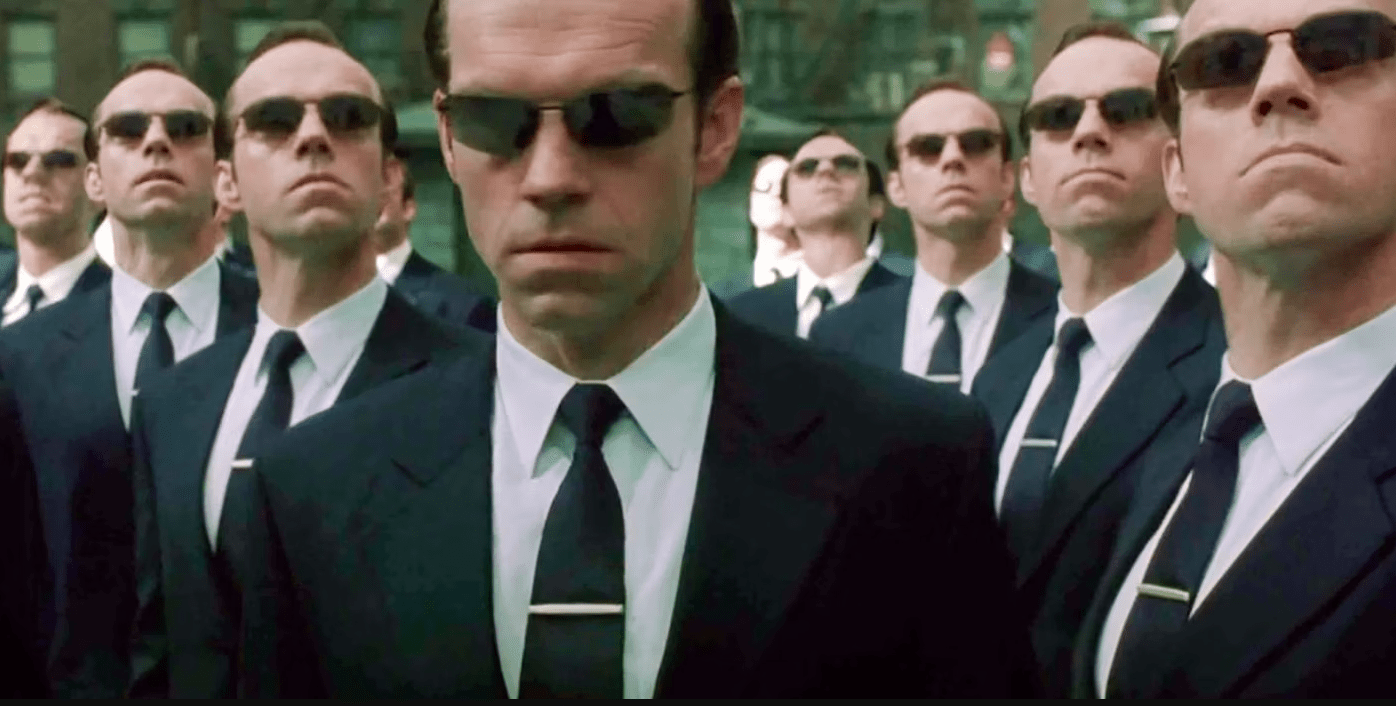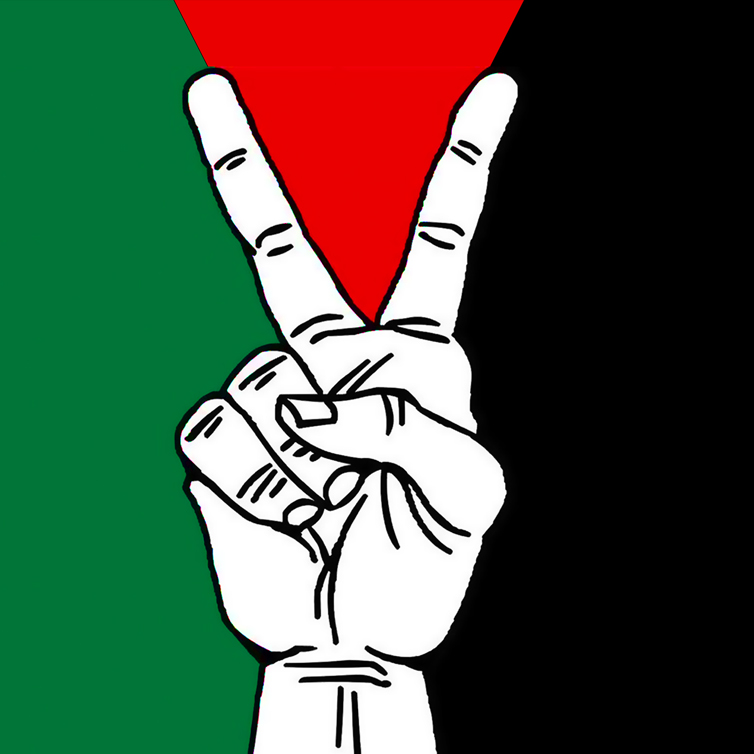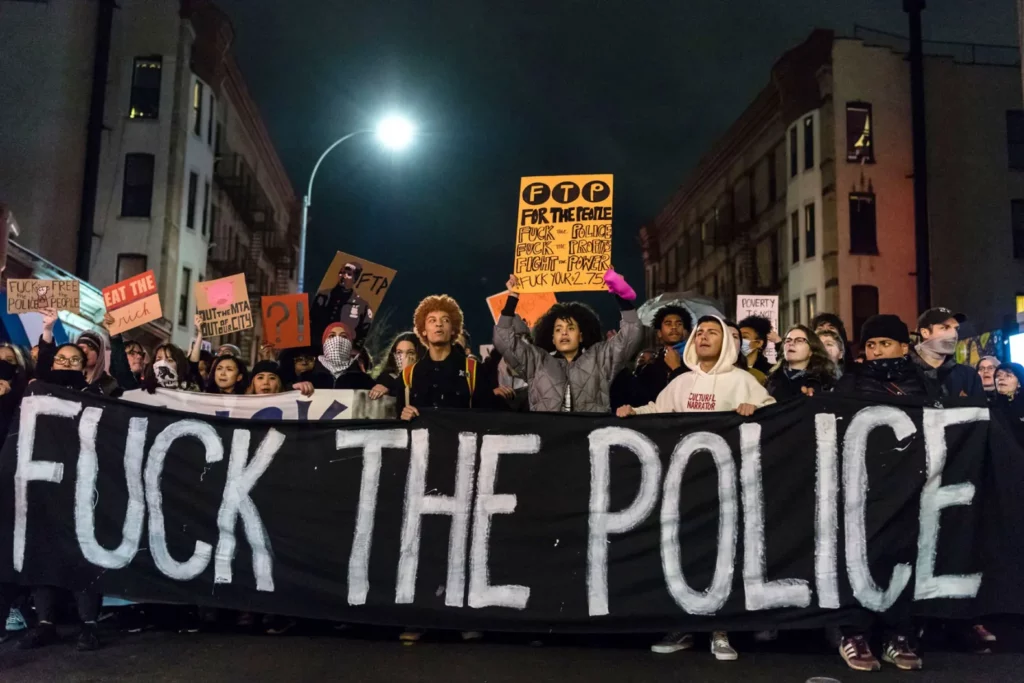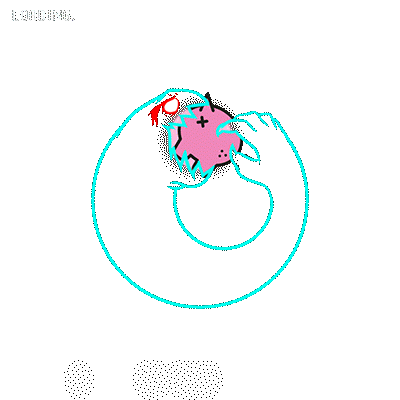In contrast to developed countries like England and Wales, where there were only three fatal police shootings in 2023, America saw 1,163 civilians killed by police. The issue of police brutality is not isolated to a few “bad apples” but deeply ingrained in the culture and history of policing itself. Many overlook the systemic turmoil in law enforcement by attributing issues to just a few “bad apples.” Due to their structure and culture, these centers of authority encourage even the “good cops” to follow or overlook unethical practices. It is critical to recognize that, regardless of their personal intentions, law enforcement officers work within a system that perpetuates violence and discrimination.
🌟 Support the artists we showcase and discover new music 🌟
First off, the actual quote is “One bad apple can spoil the barrel.” Apples produce ethylene, a gaseous hormone that acts as a ripening agent. When fruits are stored together, each emits ethylene, causing the fruits around it to ripen faster, and vice versa. As fruits ripen further, they produce increasing amounts of ethylene. Overripe fruits emit even higher levels of ethylene, which can lead to the overripening of all fruits in close proximity. Given the right conditions and enough time, a single apple can cause all of the fruit around it to ripen—and eventually rot. Hence, the saying “one bad apple spoils the barrel.”
Policing have a 400-year history. Over 200 years in the United States specifically, but it has only been within the past decade or two that policing practices have come under increased scrutiny and attention. Let’s take a look at the 75th Precinct in Brooklyn. A historically abusive precinct that, even in 2024, is producing testimonies from veteran neighbors about being robbed and even having their arms broken by the 75th precinct in the past. A documentary about that precinct titled “The Seven Five” is a documentary about a single cop, but nonetheless, couldn’t avoid the massive group of cops who took part and turned a blind eye to obvious corruption. The 75th, today, has the most civilian complaints and lawsuits in NYC. Is this precinct a “bad apple?” Is there a concentration of “bad apples?” And why don’t the other “good cops” in that precinct take action?
When you say “bad apples,” you’re referring to a small and speradic instance of people on the force who show up on the news and are fired. Correct? You couldn’t be referring to the police officers who aren’t disciplined (See Here, Here, Here, and Here), cost taxpayers billions of dollars in settlements (See Here and Here), accumulated 5, 10, 20, or 50 allegations but kept their job (See Here, Here, and Here), those who are seen every day smoking while in uniform (See Here and Here), on their personal phones (See Here), violating rights (See Here), or just doing their job when poor people do poor things? (See Here, Here, and Here) You could not be referring to these people because, well, these things are typical of the police force. I understand you’re focused on the cops who have good intentions and/or are decent people. But, by your own definition, those are the very few, if realistic.
“Bad apple” is an oversimplification of historical abuse taken place through the systemic homogeneity within police culture and among those who become cops, especially through legacy (family lineage cops). It is important to address policing as a whole because it is that very system that unifies in a chain of command, under a brand, in training, and intently in uniform. They literally dress the same!

In our justice system, judges assess evidence, evaluate circumstances, and decide on guilt or innocence. Yet, it’s often the police officer who, in the course of their duties, not only has the power to significantly impact lives by bringing individuals into the criminal justice system but also to take lives. This power dynamic raises questions about the responsibility and accountability of law enforcement officers. It is a significant amount of power for ordinary people who make “human mistakes” or are just having a “bad day.” It also emphasizes the importance of holding those in positions of power accountable to extremely high ethical standards, as police officers are often regarded as authority figures, leaders, and community figures. How fit for duty is a cop’s mental fitness if they are smokers? Our bar is so low that even a no-brainer feels disgruntled.
Systemic issues often manifest in recurring patterns of misconduct, abuse, and discriminatory practices, and it’s no different with law enforcement. While individuals may choose whether or not to abuse their authority, the law enforcement system not only permits such behavior but also lacks barriers to prevent it. In fact, the system is inherently designed to directly and indirectly accommodate such practices, resulting in the perpetuation of abusive practices throughout its infrastructure, ranging from individual officers to entire departments and the institution as a whole. You would think that a party with public safety interests would be the safest party to be involved with. However, repeated abuse indicates that the system is, at best, hypicritical (two-faced). Not to mention that these things don’t just happen outside of the departments but also within, such as in cases of sexual harassment and retaliation.
The very bottom of rational and conservative logic is that the system does both harm and good. If you can accept that this system is even partially flawed, regardless of who is to blame (politicians, Democrats, bad actors, racism, etc.), you’re looking at consistent information. In other words, corruption and misconduct—abuse of authority—have been historically documented and widely observed for ages. However, it wasn’t until we threw body-worn cameras that people started to believe the victims of police misconduct and corruption. It is incredibly challenging to get the police on criminal charges, no matter how many departments are involved. It’s true that corruption isn’t the same as in the 1970s, but we are still seeing whole departments getting into trouble, staggeringly low crime-solving statistics, and more and more complaints from your day-to-day civilian. If the police cared, they would take the time to learn the facts about crime reduction, which ultimately says police are not the answer.
Law enforcement has a longstanding practice of shielding their own, resulting in a lack of accountability that perpetuates systemic issues within the institute. This culture of impunity erodes public trust and obstructs efforts to address the underlying causes of police misconduct. Yet, the problem extends beyond the behavior of an individual; it reflects a systemic failure to confront and rectify these issues. You see, because in a chain of command, if there are no bad actors, then there are no bad leaders. Most law enforcement agencies adhere to a military-style command structure, with various ranks and levels of authority. However, accountability remains elusive, from the lowest-ranking officer to the highest. Instead of holding leaders accountable, we often grant them the discretion to decide when and if accountability should be enforced on the teams they themselves manage. Fucking mind-blowing!
When we criticize a single police officer, we can’t see beyond surface issues due to this thick and seemingly unpenetratorable layer of accountability insulation. Instead of focusing on the bigger issues, we look at the one cop with 50 allegations, not the thousands of cops with one. And if we only look at the ones with 50 allegations, we never see that institutions like the NYPD received 110,000 abuse-of-authority complaints between 2000 and 2023, with more than 90,000 of them resulting in “no discipline.” Similarly, when we argue that 80% of officers have less than four allegations, we overlook how each and every one of those cases involved at least one civilian who believed themselves to be a victim of the police! As we’ve stated earlier, we weren’t believing them until recently, and we still don’t believe them. Because something got better doesn’t make it “good.”
Law enforcement’s culture of silence, complicity, and retaliation not only perpetuates injustice but also exacerbates systemic otherism. This culture encourages an “us versus them” mindset, widening the divide between law enforcement and the communities they are meant to serve. So if you believe that BLM and the Democrats are to blame for the divide, one only needs to look at the root of the problem. A lot of the divide is evident in internal affairs, and much of it is, in fact, identifiable. There are clear and obvious signs of self-sabotage; for example, some law enforcement officers frequently use symbols that represent a perceived separation between police and civilians, such as the “thin blue line” and the Punisher logo. These symbolize a blatant division.
Internal sexual harassment cases can reveal examples of how law enforcement can draw lines between people. Despite its complexity and prevalence, police departments rarely study sexual harassment, especially victims’ firsthand accounts. However, a recent study from external parties revealed officers were hesitant to come forward due to identification concerns. Rumor mill culture and ranked retaliation made reporting harassment difficult. The study also showed that sexual harassment negatively affected participants’ work attitudes and physical and mental health. The male-dominated force, hierarchical structures, and “blue wall of silence” in police culture exacerbate sexual harassment, drawing lines between their own colleagues.
The ramifications of this police culture of internal division are widely visible in cases of whistleblowing. In an extensive investigative effort within seven states, reporters initiated 400 public records requests, obtaining tens of thousands of pages of records. Within these records, they uncovered 300 cases over the past decade where officers had bravely exposed misconduct within their ranks. The overwhelming majority of these whistleblowers reported facing severe retaliation for their actions. “In each of those, the officers who spoke out were forced out of their departments and branded traitors by fellow officers.” “The officers who lied or stayed silent in support of an accused colleague later secured promotions, overtime, and admiration from their peers.”
And now, looking externally, policing in the United States originated in colonial times, where laws often created a divide between slaveholders (the “us”) and slaves (the “them”). Post-slavery, this dynamic expanded to include more white Americans fearing Black Americans, perpetuating a cycle of oppression. Racist policies like the “war on drugs,” which included Cannibus, continued to fuel law enforcement’s disproportionate targeting of marginalized groups over time. The intersection of race and class still results in ongoing discrimination against marginalized communities today. Even white individuals can experience discrimination, especially in impoverished areas, highlighting the intricate relationship between race, class, and policing in modern society. This otherism is a stubborn and ubiquitous cancer in law enforcement.
Incarceration is not just a system of injustice; it’s a profitable industry. Private prisons, for-profit probation companies, and other entities within the criminal justice system operate with a profit motive, turning incarceration into a lucrative business. This profit-driven model extends beyond the mere housing of inmates and permeates every aspect of prison life. Third-party vendors who prioritize profit over the welfare of those in prison frequently provide basic necessities like clothing, food, and even phone calls at a premium. With those outrageous prices charged for simple items like shirts and pants within prison commissaries, the cost of food within prisons is often marked up significantly, with little regard for nutritional value or dietary needs. Even communication with loved ones through phone calls is monetized, with excessive rates charged for calls made from prison phones.
Historically, there have been numerous cases and examples that highlight the profit-driven nature of incarceration. For instance, the infamous “Kids for Cash” scandal in Pennsylvania revealed how two judges received kickbacks from a for-profit juvenile detention center in exchange for sentencing juveniles to lengthy stays in the facility. Let’s remind you that these people got caught. Seldom is there enough resources, time, or community-backed power to catch anyone in the system. This shocking case exposed the dark underbelly of the prison-industrial complex. Moreover, corporations often form devastating but legal alliances with police unions, further entrenching the profit motive within law enforcement. These partnerships can manifest in various ways, such as lobbying for harsher sentencing laws, increased funding for policing and incarceration, and resisting efforts to hold officers accountable for misconduct. In return, corporations may receive lucrative contracts to provide goods and services to law enforcement agencies, creating a mutually beneficial relationship that prioritizes profit over public safety and justice.
The perpetuation of propaganda and misinformation is another tool used to maintain the status quo and uphold the profitability of incarceration. Media campaigns, political rhetoric, and biased narratives serve to justify harsh sentencing practices, demonize certain communities, and reinforce the notion that incarceration is necessary for public safety. These tactics manipulate public perception, fuel fear and division, and obscure the underlying economic interests driving the incarceration industry. In essence, the intertwining of capitalism, propaganda, and the criminal justice system perpetuates a cycle of injustice that disproportionately harms marginalized communities. The pursuit of true justice and equality will remain undermined as long as profit-driven incarceration persists and corporations exert influence over law enforcement policies. With law enforcement’s aggressive tactics and institutional bias disproportionately affecting marginalized communities, overall, these factors create a significant divide between law enforcement and the communities they serve.
Each of the categories discussed in this article has a body of work of its own. Standalone studies by credentialed scholars as well as hours and decades of documentation with empirical findings and solutions. We’re only making the argument that a “few bad apples” is factually untrue. It’s false to claim the problem is just a handful when countless studies indicate it’s bigger than that. New police, more police, and/or “good” police are not the solution to corruption or crime. This ignorance or blatant complicity directly contradicts the maintenance of societal safety. American policing is based on ideas about law enforcement originating in 13th century England, when most thought the sun revolved around the earth. These ideas have changed little since then, have easily adapted to racism and white supremacy, and have no place in 21st century America. If you want to learn more about policing and solutions, read our article titled “The Rationale for Abolishing the Police.”
SOURCES
“Bad Apples.” Wikipedia, 20 Feb. 2024, en.wikipedia.org/wiki/Bad_apples.
Butchireddygari, Amelia Thomson-DeVeaux Nathaniel Rakich And Likhitha. “Why It’s so Rare for Police Officers to Face Legal Consequences.” FiveThirtyEight, 23 Sept. 2020, fivethirtyeight.com/features/why-its-still-so-rare-for-police-officers-to-face-legal-consequences-for-misconduct.
Cohen, Michael. “How For-profit Prisons Have Become the Biggest Lobby No One Is Talking About.” Washington Post, 6 Oct. 2021, www.washingtonpost.com/posteverything/wp/2015/04/28/how-for-profit-prisons-have-become-the-biggest-lobby-no-one-is-talking-about.
Cooper, Ryan. “To End Police Violence, We Have to End Poverty.” Theweek, 24 Aug. 2015, theweek.com/articles/573307/end-police-violence-have-end-poverty.
Cowen, Trace William. “‘Distracted Police’ Zine Documents NYPD Cops Staring at Phones Instead of Doing Actual Work.” Complex, 12 May 2023, www.complex.com/life/a/tracewilliamcowen/distracted-police-zine-nypd-cops-on-phones.
Davis, Hannah, et al. “‘No One Likes a Grass’ Female Police Officers’ Experience of Workplace Sexual Harassment: A Qualitative Study.” International Journal of Police Science & Management, vol. 25, no. 2, Mar. 2023, pp. 183–95. Crossref, https://doi.org/10.1177/14613557231157185.
Diep, Francie. “Police Are Most Likely to Use Deadly Force in Poorer, More Highly Segregated Neighborhoods.” Pacific Standard, 24 Jan. 2019, psmag.com/news/police-are-most-likely-to-use-deadly-force-in-poorer-more-highly-segregated-neighborhoods.
Edelman, Susan, et al. “Two NYPD Cops Caught Smoking Hookah While on Shooting-prevention Duty.” New York Post, 30 July 2020, nypost.com/2020/07/30/two-nypd-cops-caught-smoking-hookah-while-on-shooting-prevention-duty.
Ford, Clyde W. “Reforms Aren’t Enough to End ‘Us Vs. Them’ Policing in America.” Crosscut, 21 May 2021, crosscut.com/opinion/2021/05/reforms-arent-enough-end-us-vs-them-policing-america.
Hayes, Mike. “New York City Paid an NBA Star Millions After an NYPD Officer Broke His Leg. The Officer Paid Little Price.” ProPublica, 20 Dec. 2023, www.propublica.org/article/new-york-city-paid-an-nba-star-millions-after-an-nypd-officer-broke-his-leg.-the-officer-paid-little-price.
“How Torstar Found 600 Cases of Police Violating Fundamental Rights When No One Is Tracking This National Problem.” How Torstar Found 600 Cases of Police Violating Fundamental Rights When No One Is Tracking This National Problem, www.thestar.com/news/investigations/how-torstar-found-600-cases-of-police-violating-fundamental-rights-when-no-one-is-tracking/article_326d857d-5b34-56b5-b1a9-d06c95109e24.html. Accessed 22 Mar. 2024.
Nichols, John Kelly And Mark. We Found 85,000 Cops Who’ve Been Investigated for Misconduct. Now You Can Read Their Records. 11 June 2020, www.usatoday.com/in-depth/news/investigations/2019/04/24/usa-today-revealing-misconduct-records-police-cops/3223984002.
Raphling, John. “Poverty, Pandemic, Police Violence: Ongoing Crises Demand the US Address Pervasive Racism.” Human Rights Watch, 14 Jan. 2021, www.hrw.org/world-report/2021/essay/poverty-pandemic-police-violence-in-us.
Sadeque, Samira. “This Database Is Tracking Police Brutality Across the U.S.” The Daily Dot, 20 May 2021, www.dailydot.com/irl/police-brutality-database.
“Smoking and Law Enforcement: The Hidden Hazards of Being a Cop.” Tobacco-Free Life, 19 July 2016, tobaccofreelife.org/resources/smoking-law-enforcement.
Staff, Tcr. “Police Misconduct Cost Taxpayers Over $3.2 Billion in Settlements.” The Crime Report, 3 Feb. 2023, thecrimereport.org/2022/03/09/police-misconduct-cost-taxpayers-over-3-2-billion-in-settlements.
Thacker, Keith L. Alexander Steven Rich, Hannah. “Repeated Police Misconduct Cost Taxpayers $1.5 Billion in Settlements.” Washington Post, 9 Mar. 2022, www.washingtonpost.com/investigations/interactive/2022/police-misconduct-repeated-settlements.
Today, Nicole Carroll Usa. “USA TODAY Investigation Finds Widespread Retaliation Against Police Whistleblowers.” USA TODAY, 12 Nov. 2021, www.usatoday.com/story/opinion/2021/11/12/usa-today-investigation-shows-how-law-enforcement-punishes-whistleblowers/6373652001.
Umansky, Eric, and 1. “What Police Impunity Looks Like: ‘There Was No Discipline as No Wrongdoing Was Found.’” ProPublica, 20 Oct. 2021, www.propublica.org/article/what-police-impunity-looks-like-there-was-no-discipline-as-no-wrongdoing-was-found.
Wu, Katherine J. Study Finds Misconduct Spreads Among Police Officers Like Contagion | NOVA | PBS. 27 May 2019, www.pbs.org/wgbh/nova/article/police-misconduct-peer-effects.











